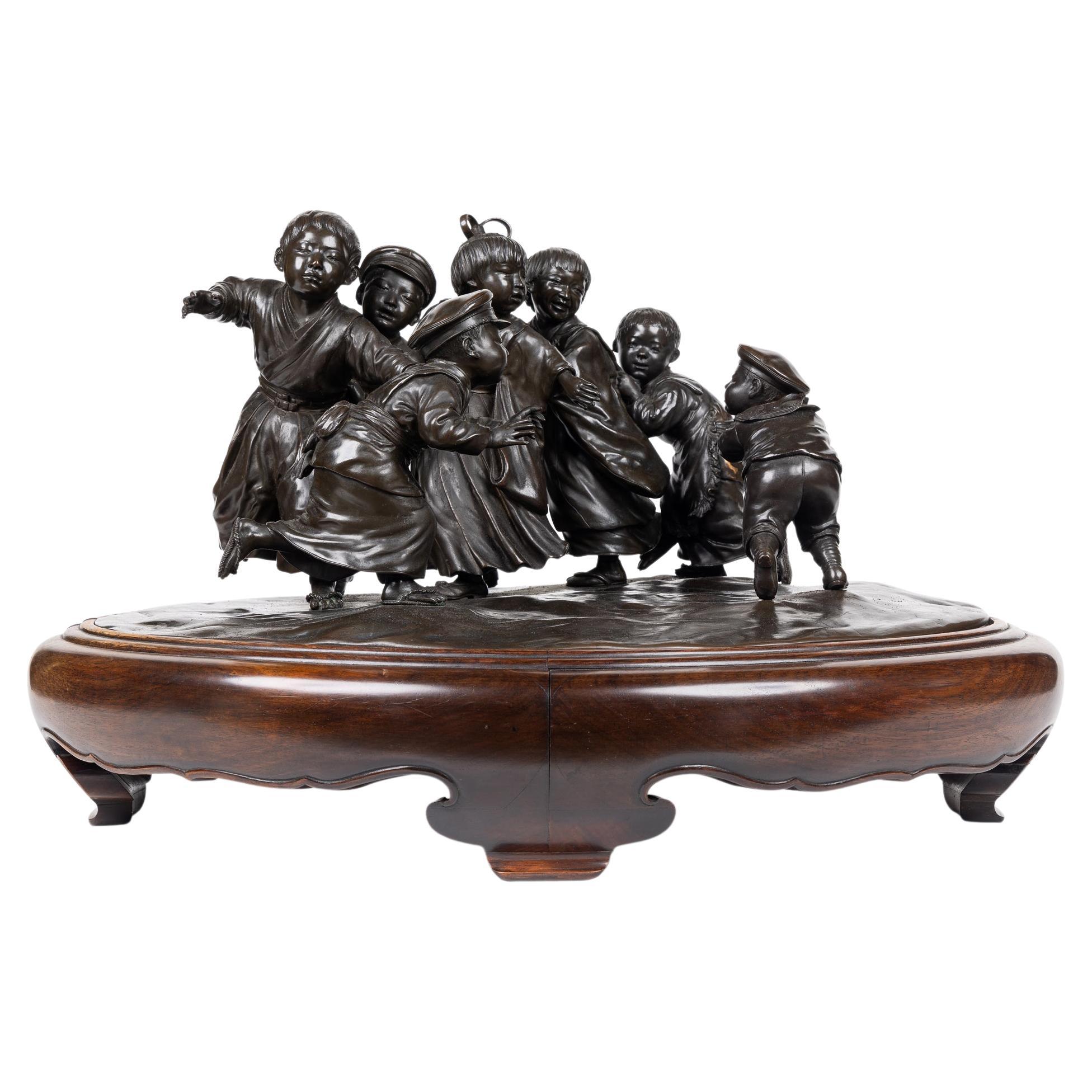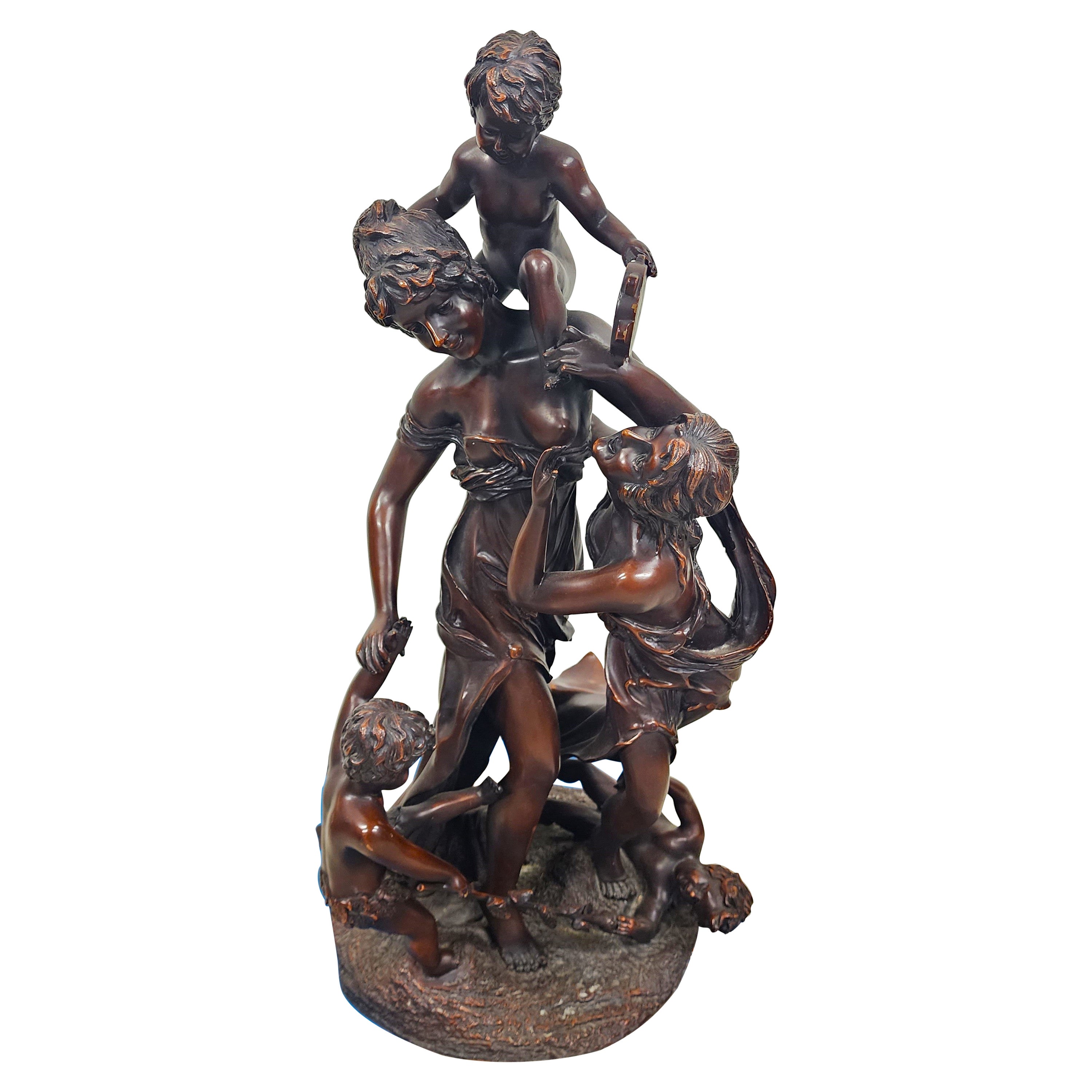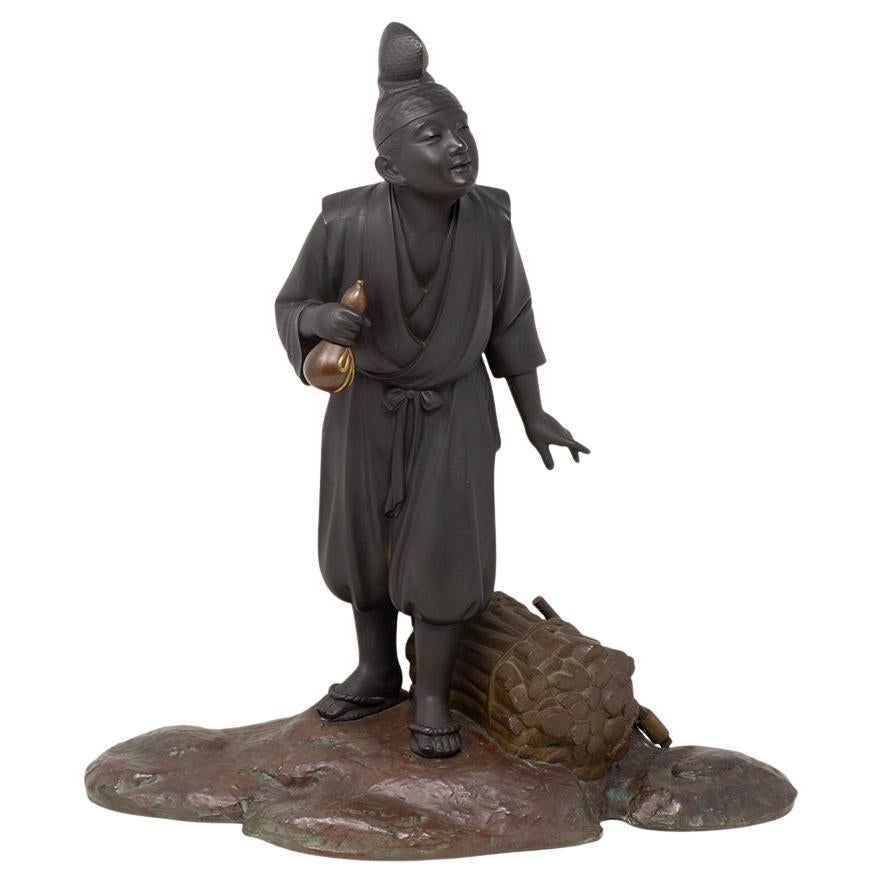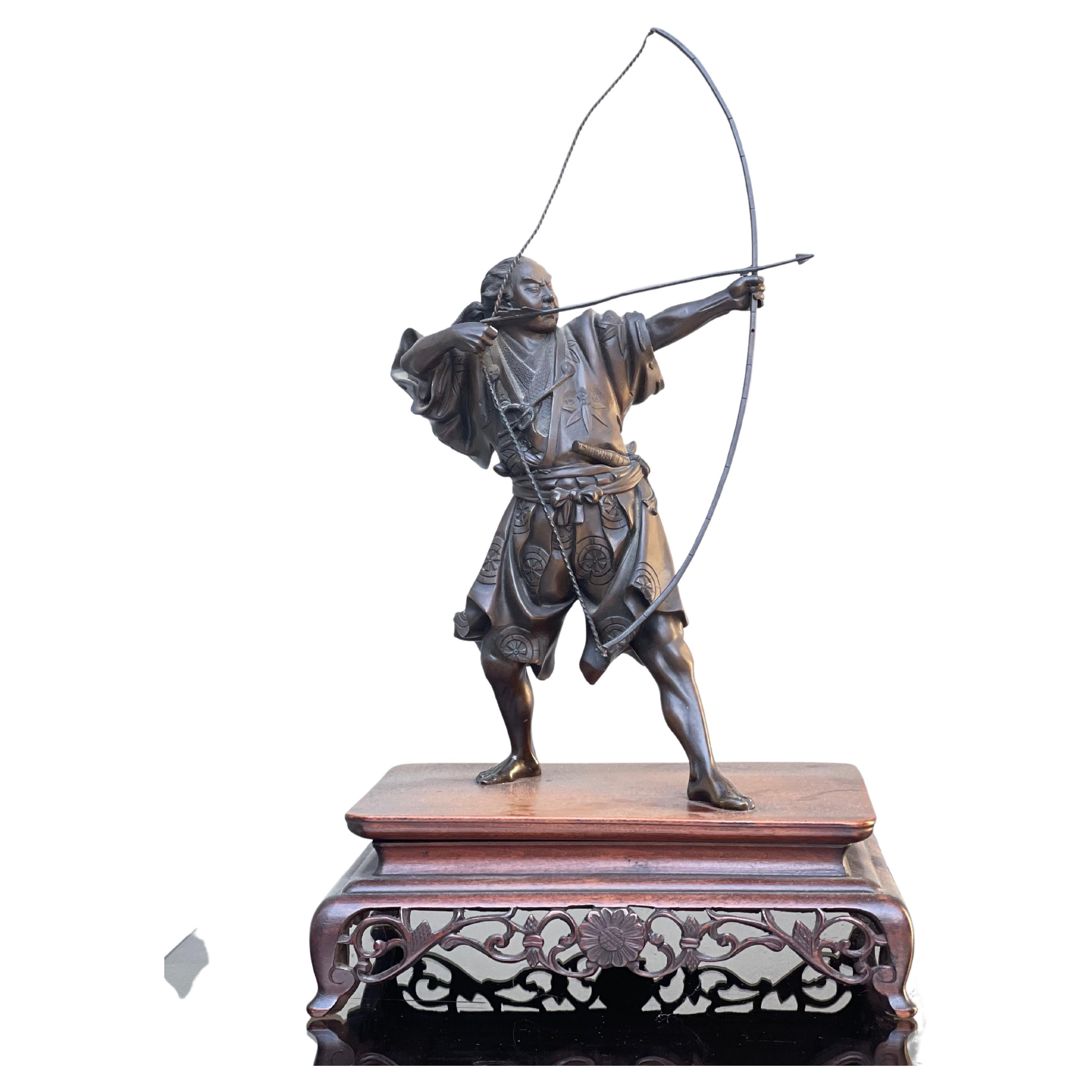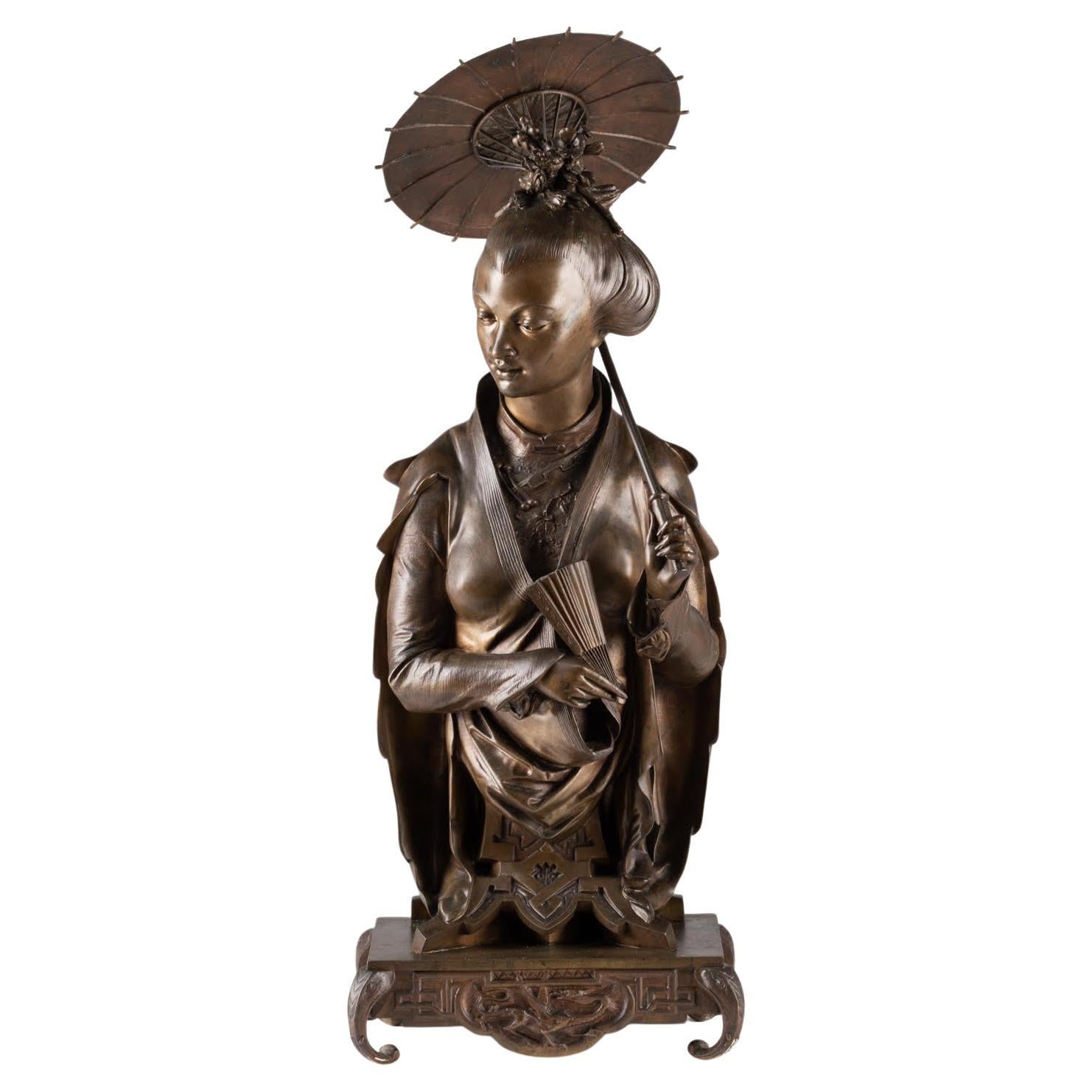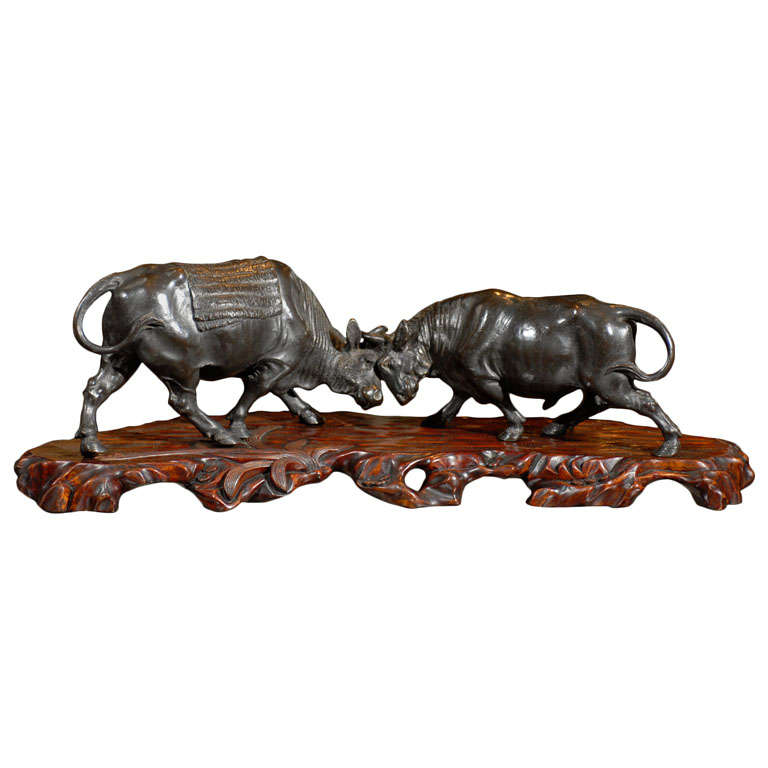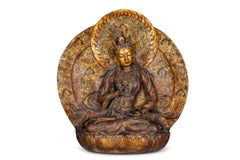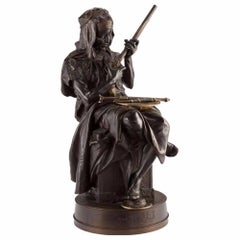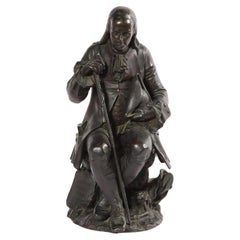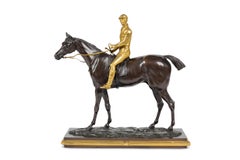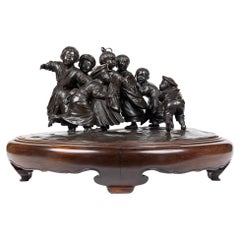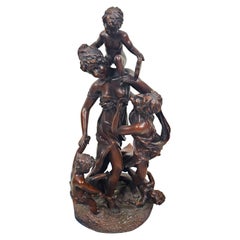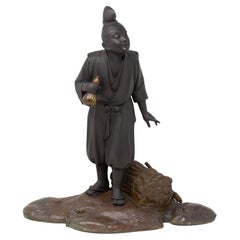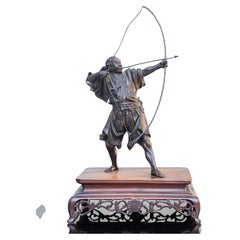Items Similar to A Large and Exceptional Japanese Meiji Period Tokyo School Bronze Sculpture
Video Loading
Want more images or videos?
Request additional images or videos from the seller
1 of 19
UnknownA Large and Exceptional Japanese Meiji Period Tokyo School Bronze Sculpture19th Century
19th Century
$57,000
£42,983.66
€49,712.67
CA$79,970.70
A$88,892.40
CHF 46,595.49
MX$1,085,591.24
NOK 581,717.79
SEK 547,287.92
DKK 371,040.88
About the Item
Presenting an extraordinary Large and Exceptional Japanese Meiji Period Tokyo School Bronze Sculpture depicting a delightful ensemble of six energetic boys engaged in a spirited pursuit of a single playful girl.
This magnificent sculpture exemplifies the artistic mastery and attention to detail of the Tokyo School during the Meiji period, showcasing a dynamic and engaging narrative.
Crafted with exceptional skill and precision, the bronze sculpture captures the playful and lively interaction between the six boys and the elusive girl. Each figure is meticulously sculpted, their expressions and gestures expertly rendered to convey their determination and enthusiasm in the pursuit. The artist's attention to detail is evident in the delicate features, intricate clothing, and lifelike poses of the figures.
This sculpture is enhanced by its magnificent hardwood stand, which elevates the piece to new heights of elegance and sophistication. The stand complements the bronze sculpture, providing a fitting foundation that showcases the artwork's grandeur and importance.
The Meiji period Tokyo School was known for its exceptional bronze sculptures, and this piece exemplifies the finest craftsmanship of the era. The dynamic composition, skillful execution, and attention to detail make this sculpture a true masterpiece and a testament to the artistic legacy of the Tokyo School.
As a large and exceptional piece, this Japanese Meiji Period Tokyo School Bronze Sculpture holds immense value both artistically and historically. Its impressive size and exceptional artistry make it a standout addition to any prestigious art collection or as a centerpiece in a refined interior space.
The captivating narrative depicted in this sculpture transcends cultural boundaries, appealing to art enthusiasts and collectors worldwide. The scene of the boys attempting to catch the girl conveys a sense of joy, innocence, and youthful exuberance that resonates universally.
Let the lively energy and exceptional craftsmanship of this piece infuse your collection or interior space with an undeniable sense of beauty and cultural significance.
14" high x 24" wide x 18" deep
Excellent condition overall. Minor rubbing to patina to one child's' lower back.
- Creation Year:19th Century
- Dimensions:Height: 14 in (35.56 cm)Width: 24 in (60.96 cm)Depth: 18 in (45.72 cm)
- Medium:
- Period:
- Condition:
- Gallery Location:Queens, NY
- Reference Number:1stDibs: LU1151212716742
About the Seller
5.0
Platinum Seller
Premium sellers with a 4.7+ rating and 24-hour response times
Established in 1980
1stDibs seller since 2019
15 sales on 1stDibs
Typical response time: 5 hours
- ShippingRetrieving quote...Shipping from: Queens, NY
- Return Policy
Authenticity Guarantee
In the unlikely event there’s an issue with an item’s authenticity, contact us within 1 year for a full refund. DetailsMoney-Back Guarantee
If your item is not as described, is damaged in transit, or does not arrive, contact us within 7 days for a full refund. Details24-Hour Cancellation
You have a 24-hour grace period in which to reconsider your purchase, with no questions asked.Vetted Professional Sellers
Our world-class sellers must adhere to strict standards for service and quality, maintaining the integrity of our listings.Price-Match Guarantee
If you find that a seller listed the same item for a lower price elsewhere, we’ll match it.Trusted Global Delivery
Our best-in-class carrier network provides specialized shipping options worldwide, including custom delivery.More From This Seller
View AllA Monumental Gilt-Lacquered Bronze Ornamental Sculpture of Vajravidarana
Located in Queens, NY
A Monumental Gilt-Lacquered Bronze Ornamental Buddha Sculpture of Vajravidarana:
A Masterpiece of Sino-Tibetan Craftsmanship, Late 19th Century, Qing Dynasty
This monumental gilt-lacquered bronze ornamental sculpture of Vajravidarana is an extraordinary and commanding piece of art, showcasing the pinnacle of Sino-Tibetan craftsmanship from the late 19th century. The figure of Vajravidarana, a powerful purification deity in Tibetan Buddhism, is meticulously sculpted to embody both spiritual authority and artistic excellence.
Vajravidarana is primarily known for his role in removing spiritual impurities and negativities. Unlike other deities associated with wisdom or compassion, Vajravidarana’s function is centered on purification and healing. He is typically depicted holding a vajra and a bell, symbolizing the cutting away of delusions and the resonance of divine truth. In this striking sculpture, Vajravidarana is shown holding a vishva vajra (the double vajra), a unique and powerful variation of the traditional iconography, which signifies ultimate protection and the dispelling of negative karma.
Vajravidarana: The Supreme Purifier and Protector
Vajravidarana is revered in Tibetan Buddhism as the deity of spiritual purification, called upon to cleanse practitioners of defilements and negative influences. His vajra represents the indestructibility of truth, while his bell signifies the wisdom that resonates through purification rituals. In this sculpture, the presence of the vishva vajra, or double vajra, enhances his association with supreme protection, ensuring the destruction of all spiritual obstacles and afflictions.
The figure’s powerful yet composed expression conveys a sense of unwavering resolve and divine authority. His posture, along with the carefully sculpted details of his robes and ornaments, highlights his function as a guardian against impurity. The inclusion of the vishva vajra rather than the usual single vajra reinforces his role as a supreme protector, capable of dispelling all forms of negativity and restoring balance.
Symbolism of the Mantras and Aureole:
Unlike deities that embody wisdom through duality, Vajravidarana’s iconography is centered on purification and exorcism. The aureole surrounding him is inscribed with sacred purification mantras rather than depictions of a consort. These mantras emphasize his function as a remover of obstacles and impurities, reinforcing his role in Buddhist healing rituals.
The presence of the sacred inscriptions elevates the sculpture’s spiritual significance, making it a focal point for meditation and ritual purification. Practitioners often visualize Vajravidarana radiating purifying light, dissolving afflictions and negative karma. This theme is mirrored in the sculptural repetition of the purification symbols on the aureole, reinforcing the deity’s role as a divine cleanser.
Gilt-Lacquered Bronze: The Artistry of Sino-Tibetan Metalwork:
The craftsmanship of this monumental figure reflects the expertise of late 19th-century Sino-Tibetan metalwork, where traditional Tibetan themes were infused with Chinese artistic sensibilities. Cast in bronze and finished with a rich gilt lacquer, the statue has an otherworldly glow, giving it an ethereal, almost divine presence. The gilding process—applied with exceptional skill—gives the sculpture a striking luminosity that enhances the fine details of the facial features, flowing robes, jewelry, and other elements of the deity’s attire.
The technique employed to create this figure speaks to the high level of craftsmanship that flourished during the late Qing Dynasty and early modern Tibetan art. The ornate details of the robes and the fine texture of the sculpture highlight the exceptional skill of the artisans who brought this work to life. The use of gold and lacquer not only reflects the preciousness of the sculpture but also its spiritual significance as an object meant to inspire reverence and meditation.
An Ornamental Sculpture of Monumental Scale:
Unlike smaller devotional objects, this sculpture is designed as an ornamental masterpiece, intended to make a grand visual and spiritual statement. Its monumental size allows it to dominate any space, offering a commanding presence that is both physically and symbolically impressive. In Buddhist practice, large sculptures of this nature are often placed in temples or meditation halls, where their imposing size and serene presence would encourage contemplation and devotion.
The grand scale of the statue further amplifies the spiritual power it is meant to convey. As a representation of Vajravidarana, it is not only a physical object of beauty but also a conduit for meditation, purification, and enlightenment. The scale of the sculpture also emphasizes the divine stature of the deity, highlighting his importance in the Buddhist tradition as the ultimate force for spiritual cleansing and protection.
Provenance:
Acquired in China in circa 1900
1905 Private Buddhist Temple, Northeast, USA
Private Sale
Solomon Treasure...
Category
19th Century Figurative Sculptures
Materials
Bronze
Emile-Edmond Peynot "Albaya' El Tunsi" The Tunisian Merchant Bronze, 1883
Located in Queens, NY
Émile-Edmond Peynot, (French, 1850 -1932)
An exceptional, exquisite and rare orientalist bronze sculpture titled Albaya' El Tunsi / The Tunisian Merchant / The Arab rifleman.
Dep...
Category
19th Century Figurative Sculptures
Materials
Bronze
Rare Patinated Bronze Sculpture of Benjamin Franklin, by A. Carrier-Belleuse
By Albert-Ernest Carrier-Belleuse
Located in Queens, NY
Albert-Ernest Carrier-Belleuse (France, 1824-1887)
A rare seated bronze statue of Benjamin Franklin holding his walking stick and hat, with a book in his ri...
Category
19th Century Academic Figurative Sculptures
Materials
Bronze
A Rare Gilt and Patinated Bronze Jockey on A Horse, circa 1875
By Isidore Jules Bonheur
Located in Queens, NY
Isidore-Jules Bonheur (French, 1827–1901)
A Rare Gilt and Patinated Bronze Jockey on A Horse, circa 1875.
Introducing a truly exceptional and highly so...
Category
19th Century Figurative Sculptures
Materials
Bronze
A Monumental Patinated Bronze Bust of Jesus Christ by Clesinger and Barbedienne
By Ferdinand Barbedienne
Located in Queens, NY
A Monumental and Truly Exceptional French Patinated Bronze Bust of Jesus Christ, Circa 1858, Signed J. Clesinger, Rome 1858 & F. Barbedienne Fondeur
This monumental and extraordinar...
Category
19th Century Figurative Sculptures
Materials
Bronze
An Exceptional Life-Size Middle Eastern Gold-Inlaid Steel Deer Sculpture
Located in Queens, NY
An Exceptional Life-Size Middle Eastern Gold-Inlaid Steel Deer Sculpture
This extraordinary life-size Middle Eastern deer sculpture exemplifies the pinnacle of artistic craftsmanshi...
Category
20th Century Figurative Sculptures
Materials
Steel
You May Also Like
A Large and Exceptional Japanese Meiji Period Tokyo School Bronze Sculpture
Located in Queens, NY
Presenting an extraordinary Large and Exceptional Japanese Meiji Period Tokyo School Bronze Sculpture depicting a delightful ensemble of six energe...
Category
Antique 19th Century Japanese Meiji Sculptures and Carvings
Materials
Bronze
Massive Bronze Sculpture Signed Neoclassical 19th Century
Located in Lake Worth, FL
For FULL item description click on More Details below.
Offering One Of Our Recent Palm Beach Estate Fine Furniture Acquisitions Of A
A Massive Signed Neo...
Category
Antique 1870s Figurative Sculptures
Materials
Bronze
$13,596 Sale Price
20% Off
Japanese Bronze Okimono Sculpture by Yamamoto Kozan
Located in Newark, England
YOUNG MAN WOOD CUTTING
From our Japanese collection, we are pleased to offer this Japanese Bronze Okimono by Yamamoto Kozan. The Japanese Bronze Sculpture cast in Bronze with a natu...
Category
Early 20th Century Japanese Meiji Sculptures and Carvings
Materials
Bronze
Scultura Bronzo Raffigurazione Arciere Periodo Meiji Firmata
By Saeki Yoshimitsu
Located in Milano, MI
Scultura Bronzo Raffigurazione Arciere periodo Meiji Firmata
Descrizione:
Scultura giapponese antica raffigurazione di arciere in bronzo realizzata...
Category
Antique Late 19th Century Asian Meiji Sculptures and Carvings
Materials
Bronze
Sculpture in Patinated Bronze by Auguste Lalouette, Napoleon III Period.
Located in Saint-Ouen, FR
Sculpture in patinated bronze by Auguste Lalouette, 19th century, Napoleon III period.
A sculpture by Lalouette Auguste of a Japanese woman in elega...
Category
Antique 19th Century French Napoleon III Figurative Sculptures
Materials
Bronze
Meiji period bronze
Located in Atlanta, GA
Very fine Japanese bronze of two territorial beasts, on a decoratively carved teak base. The base is 34 inches long, the bronze is 29 inches long.
Category
Antique Late 19th Century Japanese Meiji Sculptures
Materials
Bronze
$9,250
More Ways To Browse
Antique Sculpture Stand
Japan Wood Sculpture
Antique Bronze Sculpture Artists
Large Bronze Centerpiece
Meiji Wood Sculpture
Meiji Period Bronze Figure
Jiang Bronze
Joan Cornella
Joie De Vivre Macdonald
M Delo
Marc Hanson
Orlinski Wolf
Otter Taxidermy
Picasso Yan
Pierre Caille
Resin Gummy Bear
Richard Jolley Glass
Richard Macdonald Nightfall
